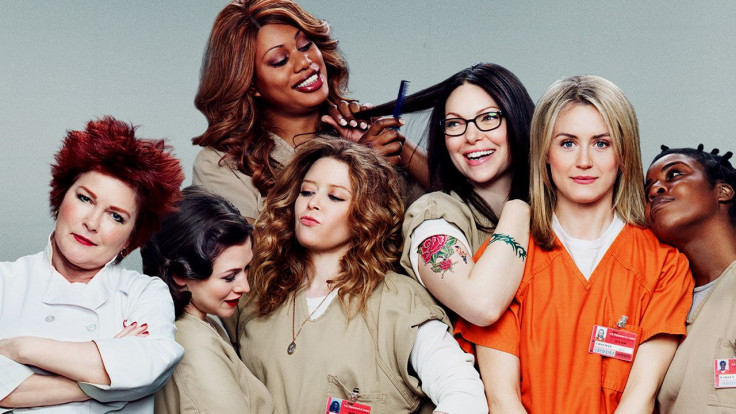Netflix Original Series Ratings Are A Mystery As Adam Sandler Joins TV’s New Dark Ages

The entertainment world was abuzz Thursday with news that Adam Sandler will develop four new movies exclusively for Netflix Inc., further solidifying the Internet streaming company’s voracious appetite for original content. If you were wondering how many people will watch the new Sandler comedies -- or won’t watch, depending on your opinion of the waning movie star -- you’ll just have to keep wondering.
Much to the vexation of media analysts and audience-measurement companies, Netflix refuses to make its ratings data public, and there’s no indication that it will reverse that decision anytime soon. Ted Sarandos, the company’s chief content officer, has called TV ratings a “benchmark that is irrelevant,” despite the fact that it’s a benchmark the broadcast industry has relied upon since the days of radio.
Streaming companies like Netflix have been heralded as the future of television, but given their reluctance to tell us how many people actually watch their shows, it can feel more like television is moving into the Dark Ages, data-wise. But do conventional ratings even matter in a world of on-demand viewing and fragmented tastes?
Possibly not, outside of our own data-obsessed inclinations. Netflix, unlike traditional TV networks, isn't beholden to advertisers, and therefore has no real incentive -- aside from bragging rights -- to crow about its audience size. As a subscription-based service, the only number it needs to be concerned with is how many people are signing up, and that number, for now, is rising. It recently passed the 50 million mark, with Netflix adding 570,000 U.S. streaming subscribers in the last quarter.
Exactly how many of those subscribers watch, say, “House of Cards” is a matter of pure speculation, and analysts say that could be for one of two reasons: Either ratings for Netflix shows are terrible, or they’re through the roof. Either way, Ken Wisnefski, chief executive of the Internet marketing company WebiMax, said Netflix has an incentive to keep us in the dark.
“If it’s bad, it would prevent players such as an Adam Sandler from getting involved in the process,” Wisnefski said. “If it’s really good, it will intensify efforts from other competitors.”
In fact, the competition is already intensifying. Amazon Studios, which last year struggled to build a buzz around its original series, may finally be coming into its own this year with the half-hour comedy “Transparent.” Already a breakthrough critical hit, the show just needs to find an audience to become a bona fide hit. If it’s a success, Amazon may choose to brag by proudly displaying its audience numbers, thereby forcing Netflix to step up to the plate.
That could ultimately be bad for both companies, considering they would then have to be equally transparent about their flops. As Forbes’ Dorothy Pomerantz wrote earlier this year, one possible reason Netflix has been reluctant to share ratings for its hits is because it doesn’t want to set that precedent. “Once the company announced viewership for one show, investors would expect it to reveal much more information about how many people are watching,” she wrote.
Cam Cullen, vice president of global marketing at Procera Networks, a broadband data company, said Netflix has also been good about preventing third-party companies from getting an accurate reading on its audience size. “I think Netflix will try to avoid letting that data get out as long as they can,” he said. “They even changed the way that they stream their videos to make it harder for people like Procera to measure their viewing. We haven’t yet figured out their new scheme.”
At the same time, Cullen said traditional measurements -- like those perfected by Nielsen Media Research -- are “very flawed now,” with DVRs and online streaming affecting real-time ratings. Nielsen, which has long tracked viewership for subscription-based cable networks like HBO and Showtime, has been seeking to include broadband-only viewing to its audience measurement for some time. If it wants to quell perceptions of its imminent obsolescence, it will have to eventually find a way to track streaming companies like Netflix.
In the meantime, we shouldn’t expect Netflix to volunteer. “It’s frustrating, especially for journalists, but it makes so much sense,” Pomerantz told International Business Times. “What do they have to gain by releasing that information?”
Got a news tip? Email me. Follow me on Twitter @christopherzara.
© Copyright IBTimes 2025. All rights reserved.






















